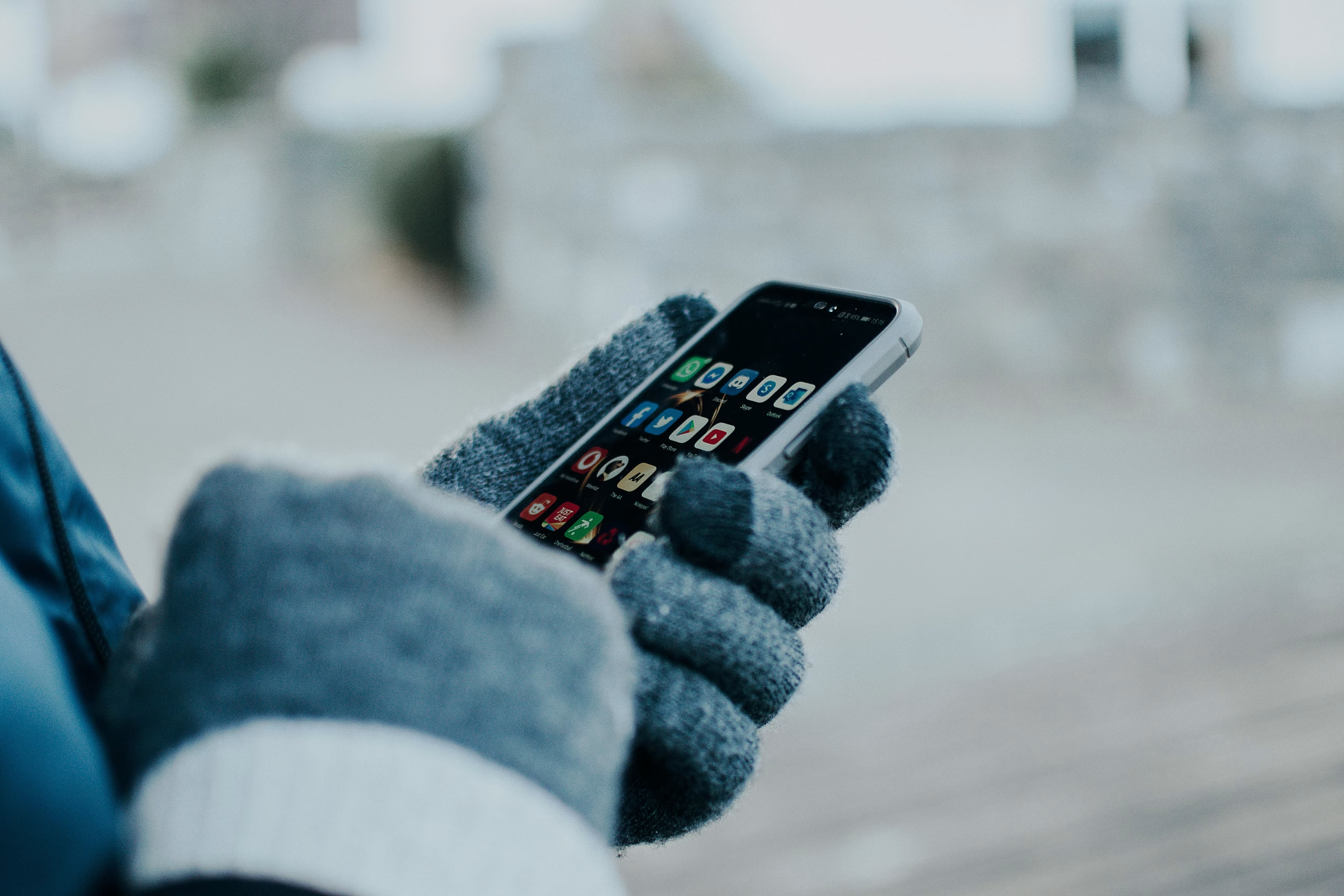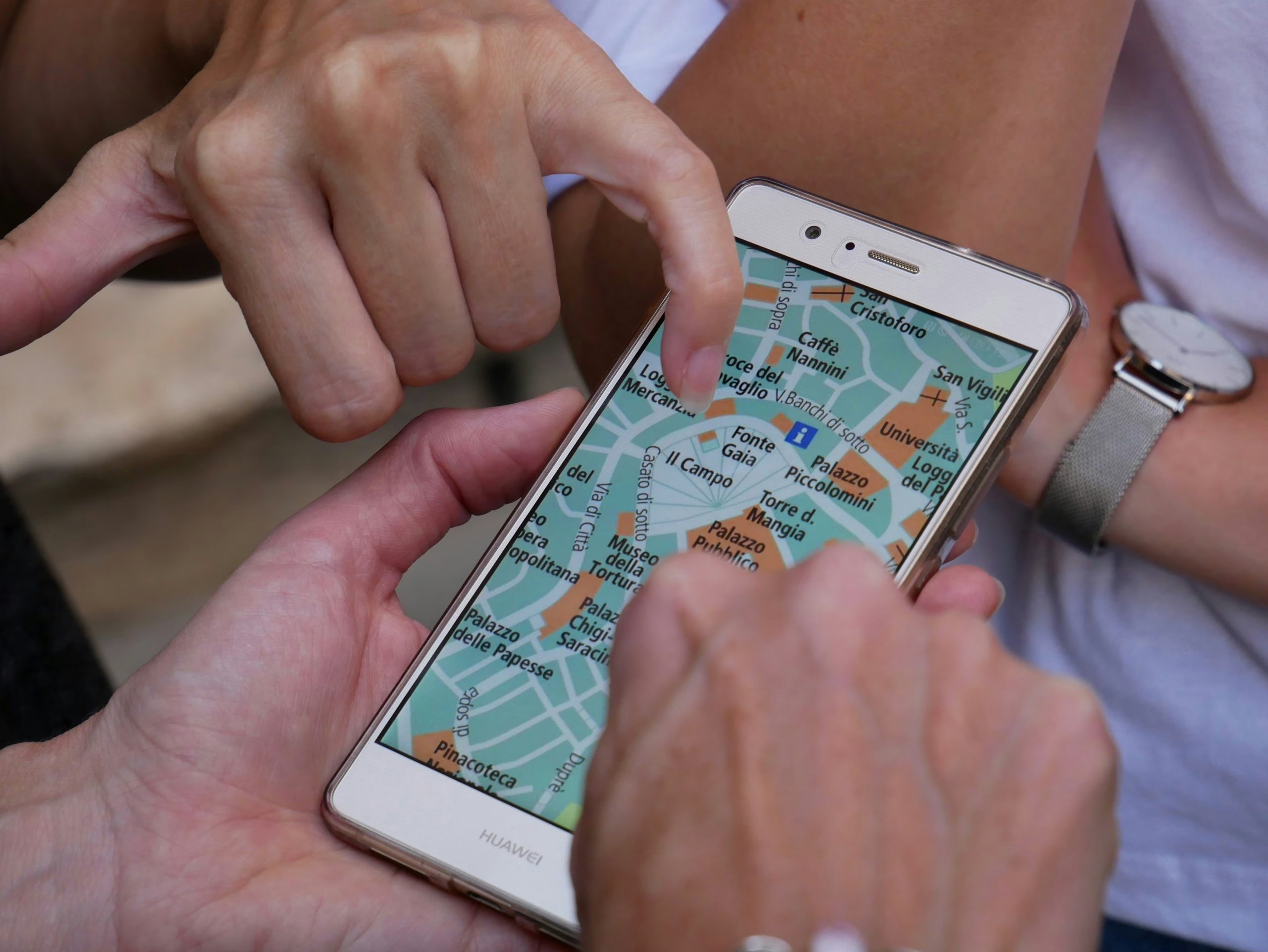How Much Data Do I Need When Traveling: A Guide to Mobile Data Usage on Your Trips

Traveling often means staying connected, but one question remains: how much data do you need when traveling? The answer varies based on personal habits and the nature of the trip. For a brief outing, a few gigabytes may be sufficient, while longer journeys could require a more substantial plan.
Understanding how data usage breaks down can help travelers make informed decisions. Activities such as browsing the web, using navigation apps, and streaming music or videos consume different amounts of data. Knowing these details allows for better planning and can prevent unexpected charges.
With the right strategies, managing data while traveling doesn’t have to be stressful. Whether opting for a local SIM card, relying on Wi-Fi, or choosing a suitable mobile plan, travelers can stay connected without overspending.
Key Takeaways
- Assess data needs based on specific travel activities.
- Explore various mobile data options before the trip.
- Plan for data management to avoid unexpected costs.
Understanding Data Needs for Travel
Knowing how much data to plan for while traveling is crucial for avoiding unexpected fees and staying connected. Different types of activities use various amounts of data, and understanding these will help travelers estimate their needs accurately.
Types of Data Usage
Travelers engage in many online activities that consume data. Here are some common types:
- Social Media: Apps like Facebook and Instagram use around 10MB to 100MB per hour, depending on usage.
- Streaming Video: Watching videos on platforms like YouTube can consume between 60MB to 100MB per hour, making it one of the highest data consumers.
- Messaging Apps: Apps like WhatsApp and Messenger generally use 653MB for extensive messaging and voice calls.
- Web Browsing: Loading a web page typically requires about 100KB to 5MB, depending on the content.
Understanding these usages helps in estimating total data needs for a trip.
Factors Affecting Data Consumption
Several factors influence how much data one will use while traveling. These include:
- Travel Duration: Longer trips naturally lead to more data use.
- Activities Planned: Frequent video streaming will increase data requirements.
- Device Settings: Automatic updates and background app refreshes can consume more data than expected.
- Local Connection Quality: In areas with poor connectivity, users might use more data while trying to maintain a connection.
Travelers should consider these factors to better manage their data plans.
Average Data Usage Patterns
Data needs can vary widely based on individual habits. Here are some average usage patterns:
- Daily Social Media Interaction: 20-30MB, with heavier use potentially doubling this.
- Streaming Music: Approximately 10-15MB per hour with services like Spotify.
- Email with Attachments: Sending or receiving can range from 100KB to 10MB, depending on the size of attachments.
- Navigation Apps: Using maps or ride-sharing apps can consume about 5-10MB daily.
Adjusting for personal habits and trip specifics will help ensure a better travel experience.
Assessing Your Data Requirements
Determining how much data to have during travel involves analyzing the length of the trip and the specific needs based on the destination. This process helps ensure adequate connectivity without overspending on data.
Estimating Data Needs Based on Trip Duration
Different trip lengths require varied amounts of data. Here’s a rough estimate based on travel habits:
- Short Trips (1-3 days): About 1GB should suffice for light use like checking emails and maps.
- Medium Trips (4-7 days): Estimated needs range from 2GB to 5GB, considering social media and messaging.
- Long Trips (1-2 weeks): It’s wise to budget between 7GB and 14GB for consistent internet use, including streaming and navigation.
Travelers who frequently use apps for directions or share photos may need extra data. Planning for higher usage helps avoid unexpected limits.
Considering Destination-Specific Data Factors
The destination can significantly affect data requirements. Some places offer robust networks, while others may have limited coverage. Key factors include:
Network Coverage: Check if the destination has quality cellular service. Urban areas usually have better access than rural regions.
Availability of Wi-Fi: Look for hotels, cafes, or public spaces offering free Wi-Fi. Using Wi-Fi can reduce mobile data use.
Local Data Plans: Research if local SIM cards or eSIMs provide better value and coverage. These options might offer more data at a reasonable price.
Considering these elements enables smarter data management and enhances the travel experience.
Data Management Strategies
Managing data effectively while traveling is essential for avoiding unexpected charges. Smart planning and the right tools can help travelers stay connected without running out of data.
Utilizing Offline Resources
Travelers can save data by using offline resources. Maps and travel guides can be downloaded before the trip. Google Maps allows users to save an area for offline use, making navigation easier without internet access.
Travelers should consider downloading music, podcasts, and e-books beforehand. Many streaming services offer offline options for users. Using these features reduces the need for constant data use during the trip. Additionally, travelers can take screenshots of important information and save them for reference while offline.
Finding Wi-Fi Access Abroad
Accessing Wi-Fi can significantly lower data usage while traveling. Many airports, cafes, and hotels provide free Wi-Fi. Travelers should take advantage of these locations to check emails and messages or upload photos.
Using apps like Wi-Fi Finder can help locate free networks nearby. Some places, like libraries and public squares, might also offer free internet access. It’s important to connect to secure networks and use VPNs when necessary to protect personal information.
Apps and Tools for Data Tracking
Using apps to track data usage can prevent exceeding limits. Several apps allow users to monitor their real-time data consumption. For instance, users can set alerts for when they are nearing their data limit.
Travelers can also explore built-in smartphone settings that track data usage per app. This feature helps identify which apps use the most data. By managing app settings or disabling non-essential apps, travelers can control their data consumption more effectively.
Mobile Data Options for Travelers
Travelers have several choices for mobile data while abroad. Each option comes with its pros and cons, depending on the traveler’s needs, duration of stay, and budget. Here are key mobile data options to consider.
International Roaming Plans
Many mobile carriers offer international roaming plans. These plans allow users to maintain their current phone number while using data abroad. Costs can vary greatly.
Typical features include:
- Daily rates: Some carriers charge a daily fee for data use.
- Monthly packages: Others may offer packages with larger data allowances.
Travelers should check their carrier’s website or app for specific rates before leaving. Depending on the plan, data rates can range from $5 to $10 per day.
Local SIM Cards vs. Global SIM Cards
Local SIM cards can be an excellent option for travelers staying in one country for an extended period. These cards often provide affordable data rates compared to international roaming.
Key points for local SIM cards:
- Cost-effective: Local providers frequently offer better pricing and faster speeds.
- Availability: They can be easily purchased at airports, stores, or kiosks.
On the other hand, global SIM cards work in multiple countries but may have higher costs. They offer convenience for travelers moving between several locations. Choosing the right one depends on travel plans and data usage needs.
Portable Wi-Fi Hotspots and Data Packages
Portable Wi-Fi hotspots are popular among travelers who need internet access for multiple devices. A portable hotspot connects to a mobile network and creates a Wi-Fi signal for smartphones, tablets, and laptops.
Benefits include:
- Multiple connections: Multiple devices can connect without extra SIMs.
- Flexibility: Users can switch between networks as needed.
Data packages, often available for short-term rentals, allow users to pay only for the data used. Prices vary, but they usually range from $10 to $30 for a few days. Travelers should research options according to their needs and budget before departing.
Telekonek eSIM: Flexible and Affordable for Global Travel
For a more flexible and affordable alternative, consider Telekonek’s eSIM. With Telekonek, travelers can build a custom data plan by selecting the specific data amount and duration they need, avoiding high roaming fees or the hassle of physical SIM cards. This makes it an ideal choice for multi-destination trips or short stays, providing seamless coverage across multiple countries with a plan tailored to your travel needs.
Cost Considerations
Traveling can incur various data costs that travelers should carefully evaluate. Knowing how to compare data plans, understand charges, and reduce expenses can lead to significant savings. Here are the key aspects of cost considerations when it comes to mobile data while traveling.
Comparing Data Plan Costs
When planning mobile data usage abroad, travelers often weigh various options: local SIM cards, international roaming plans, mobile hotspot devices, or an eSIM. Each has its costs and limitations, but Telekonek’s customizable eSIM plans can be an ideal solution for flexibility and savings.
With Telekonek, travelers can customize their own data plan, choosing the validity period and data allocation that best fits their trip, avoiding unnecessary charges for unused data. Here’s a cost comparison:
- Local SIM: $10 for 3GB
- Roaming Plan: $20 for 2GB
- Mobile Hotspot Rental: $15 for 1GB
- Telekonek eSIM: Tailor your data and duration, with competitive rates per gigabyte and no need to swap physical SIM cards. Prices start at $3.50
These comparisons can help travelers select the most cost-effective option based on their expected usage.
Understanding Data Charges and Fees
Data charges can vary widely between providers and countries. Many carriers impose roaming fees that can add up quickly. It’s essential to check for hidden fees in service agreements.
Some common data charges to watch out for include:
- Roaming Fees: Extra charges for using data outside your home country.
- Overage Fees: Costs for exceeding your data plan limits.
- Activation Fees: Charges for activating a new plan or SIM card.
Reading the fine print can help travelers avoid unpleasant surprises.
Tips for Reducing Data Costs While Traveling
Travelers can implement practical strategies to minimize data costs. Here are some effective tips:
- Download Offline Maps: Use apps like Google Maps to download routes before traveling.
- Disable Background Data: Limit data usage by turning off background app refresh on devices.
- Use Wi-Fi Whenever Possible: Seek out cafes and hotels that offer free Wi-Fi.
By using these methods, travelers can ensure that they keep their costs low without sacrificing essential connectivity during their trips.
Preparing for Your Trip
Travelers need to prepare their devices for smooth international use and ensure they have the right apps before leaving. This preparation will help them manage their data and stay connected while abroad.
Setting Up Your Device for International Use
Before traveling, it is crucial to set up devices for international use. First, check if the phone is unlocked. An unlocked phone allows using a local SIM card, which can save on data costs. Travelers should also review their current mobile plan to see if it includes international roaming.
Next, turn off automatic updates for apps and software. Automatic updates can consume a lot of data. Additionally, travelers should set their devices to airplane mode when not using data. This can prevent unwanted charges while roaming.
Lastly, back up important data before departure. This can include contacts, photos, and documents. Backups can minimize data loss if a device is lost or stolen.
Important Apps and Downloads Before Departure
Installing essential apps before the trip can enhance the travel experience. Travelers should consider downloading mapping apps like Google Maps or offline maps for navigation. These apps help in finding routes without using data.
Another important app is a messaging platform, such as WhatsApp or Viber. These apps allow for communication with friends and family without incurring SMS charges.
Travelers should also install translation apps to bridge language gaps. Apps like Google Translate can make interactions easier in foreign countries.
Lastly, consider downloading entertainment apps, like Netflix or Spotify, and saving content for offline use. This preparation ensures they stay entertained without using mobile data while traveling.
Staying Connected Responsibly
Travelers must prioritize data security and privacy while using mobile internet during their trips. Being aware of potential risks and taking steps to protect personal information is crucial for a safe experience.
Keeping Data Security in Mind
When connecting to the internet while traveling, using a Virtual Private Network (VPN) can be a smart choice. A VPN encrypts data, making it harder for hackers to intercept.
Additionally, travelers should avoid accessing sensitive accounts, like online banking, on public Wi-Fi networks.
Some tips for maintaining data security include:
- Use Strong Passwords: Ensure all accounts have complex passwords.
- Update Apps Regularly: Keep apps updated to protect against vulnerabilities.
- Enable Two-Factor Authentication: This adds an extra layer of security.
By following these practices, travelers can feel more secure while enjoying their connected experiences.
Privacy Considerations When Using Public Networks
Public networks may seem convenient, but they often lack security. Many people may unknowingly expose their personal data without adequate precautions.
Travelers should be cautious and follow guidelines for safe usage:
- Limit Personal Information: Avoid logging into sensitive accounts.
- Turn Off Sharing Options: Disable file sharing and location services.
- Forget the Network After Use: This helps prevent automatic reconnections.
Staying aware of privacy settings within apps can also enhance security. Adjusting these settings reduces the chance of personal information leaking while connected to public Wi-Fi.
Frequently Asked Questions
Travelers often have specific questions about mobile data needs when going abroad. Understanding these details can help ensure they stay connected during their trip.
What is an adequate amount of mobile data for a week-long overseas trip?
For a week-long trip, users can typically expect to need around 7GB of data. This estimate considers activities like browsing, emails, and social media usage. Those who use streaming services may need more data.
How much mobile data is typically required for international travel?
On average, travelers might use about 1GB of data per day. This amount varies based on activities, like navigation, messaging, or social media. It’s essential to evaluate personal habits and travel plans for a more accurate estimate.
How many gigabytes should I plan to use per day during international travels?
Many travelers find that 1GB per day is a reasonable estimate. This amount accommodates standard usage, including browsing and messaging. More data may be required for video or music streaming.
Is 5GB of data sufficient for a one-week vacation?
Five gigabytes can be tight for a week-long vacation. It might work if a traveler limits data-intensive activities. For those who frequently use social media or streaming services, it may not be enough.
Can 10GB of data meet the needs for a two-week journey?
Ten gigabytes should be sufficient for most travelers over two weeks. This amount allows for basic internet activities and some streaming. However, heavy users might still find it limiting.
How can I estimate data usage for a two-week vacation abroad?
To estimate usage, travelers should review their typical daily data consumption. Checking app data usage on their devices helps understand where the most data is spent. This approach provides a clearer picture for planning.
Conclusion: Simplify Your Travel Data Needs with Telekonek
When it comes to staying connected abroad, planning data usage can be challenging. Telekonek makes it easier by offering customizable eSIM plans, allowing you to choose the exact data amount and duration you need without committing to more than you’ll use. Whether for a week-long city getaway or a two-week cultural exploration across multiple countries, Telekonek’s flexible eSIM solution keeps you connected without the high costs of traditional roaming. Enjoy your journey, knowing you have a tailored data plan that supports your travels every step of the way.


